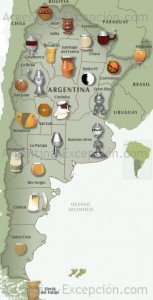
Presidential elections in Argentina
On 22nd November a second round of voting between two leading parties since neither succeeded in securing a majority in the elections held in Argentina on 25th October 2015.
Daniel Scioli, the Central-left candidate although led exit polls, centre-right Buenos Aires Mayor Mauricio Marci edged with most votes counted. Many had expected Mr Scioli to lead by a greater margin. With 96 per cent of the votes counted, Mr Scioli was marginally ahead with 36.7 per cent of the vote against Mr Marci’s 34.5 per cent. Sergio Massa, a former ally turned rival of outgoing President Cristina Fernandez de Kirchner, came third with 21.3 per cent and has admitted defeat. Mr Scioli was favourite candidate handpicked by President Fernandes who is constitutionally barred from seeking a third term. Mr Scioli pledged tax cuts for workers earning under a certain income a move expected to affect half a million people and vowed to bring down Argentina’s inflation to single digits in less than four years.
President Cristina Fernandez de Kirchner was re-elected in 2011 and the constitution does not allow more than two consecutive terms. The election of the president was carried out using the ballotage system, in which a candidate would win if they received 45 per cent of the vote, or if they received 40 per cent of the vote and were 10 per cent points ahead of the second-place candidate. Voting, however, is compulsory for citizens between 18 and 70 years old. The 130 seats of the Chamber of Deputies up for election were elected from 24 multi-member constituencies based on the 23 provinces and Buenos Aires.

